

10 captivating landscapes in inland NSW
Gibraltar Range National Park at Gibraltar Range, Outback NSW




Destination NSW
Take a trip into NSW’s Country and Outback regions in search of the state’s tallest waterfalls, ancient rock formations, World Heritage-listed rainforests and so much more. And don’t forget your camera – the locations are the definition of picture perfect.
Cascading a dizzying 220 metres over dramatic slate cliffs into the valley below, Wollomombi Falls is the highest waterfall in NSW. When it has been raining, you’ll be soaked with the refreshing spray as you stand on the viewing platform. Wollomombi is just one of the spectacular sights in Oxley Wild Rivers National Park, a 30-minute drive from Armidale in the New England region of the state, with rugged mountains, deep chasms, roaring rivers and breathtaking vistas at every turn.
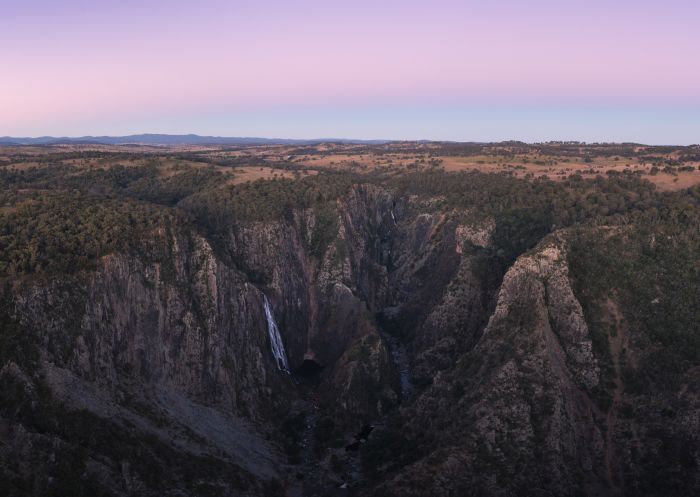
Oxley Wild Rivers National Park, Walcha
On cloudless winter nights in Australia’s only Dark Sky Park, the Warrumbungle National Park (six hours northwest of Sydney), you can see straight into the heart of distant galaxies. Gaze upon millions of stars and the formations of the Milky Way from secluded lookouts or the comfort of your sleeping bag. Be sure to visit Siding Spring Observatory to get some tips from the experts, and peek through one of Australia’s biggest telescopes. The landscape of the park is as captivating as the sky, carved from millions of years of volcanic activity. Take the Grand High Tops walk to see the striking 90-metre-tall Breadknife formation.
Right on the edge of Australia’s largest city, Sydney, there’s a dramatic wilderness where you won’t see another soul. The World Heritage-listed Wollemi National Park is a place of towering cliffs, wild rivers, deep canyons and serene forests. It’s particularly famous for its sunsets – the Pagoda Lookout near Rylstone is a great vantage point. Set off on the Greater Blue Mountains Drive through the Hawkesbury and you can be at the Colo entrance to the park in less than 90 minutes.
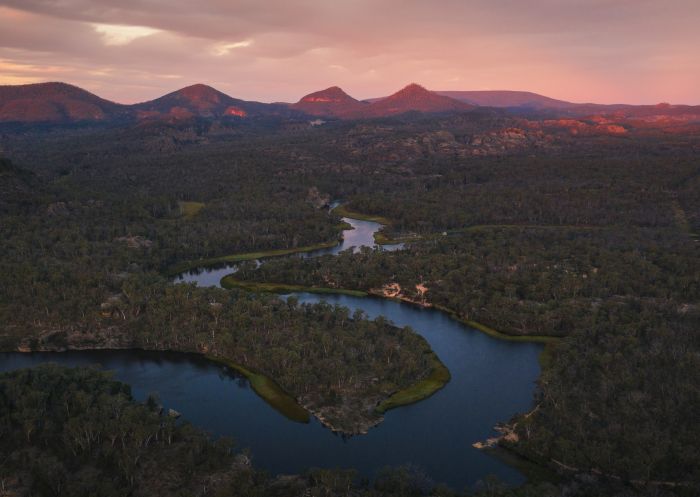
Wollemi National Park, Mudgee
It’s one of the harshest, driest landscapes in NSW, but Mungo National Park (10 hours west of Sydney) is teeming with life. More than 110 species of birds, 22 mammals and 62 reptiles call this vast park home, part of the World Heritage-listed Willandra Lakes Region. Huge mobs of red kangaroos can be seen bounding across the plains or sprawled out in the shade of the trees. Graceful emus, standing up to two metres tall, pick their way through the scrub. The lunar-like landscapes include a ring of enormous sand dunes, known as the Walls of China, and have been the site of discovery of Mungo Man and Mungo Woman, Aboriginal Australians buried here more than 42,000 years ago.
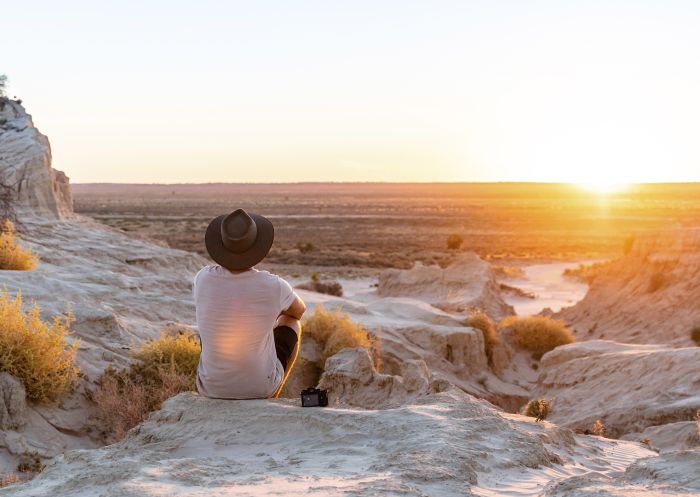
Mungo National Park, Mungo
For many years during the drought of the 2010s, the nine Menindee Lakes stood dry. But following recent record-breaking rainfalls, the lakes are full to capacity, creating a stunning aquatic landscape on the edge of the Australian desert. Bird life has also returned with thousands of pelicans, ducks, swans, cormorants, ibis and spoonbills plying the calm waters. The lakes are a stop on the famed Darling River Run, an epic outback road trip through the most remote parts of the state, near Broken Hill in the very west.

Menindee Lakes, Menindee
People have been mining precious minerals and metals in Cobar (700 kilometres northwest of Sydney in the centre of the state) for 150 years. It’s an industry that has literally shaped the town and the landscape around it. From the top of Fort Bourke Hill Lookout, 300 metres above sea level, you can peer down into the pit of the open-cut gold mine, accessed by a winding track carved straight into the rock. It will give you an illuminating look below the surface.
You’ll find some of the oldest rainforest on Earth in Gibraltar Range National Park, part of the Gondwana Rainforests of Australia World Heritage Area in the Northern Rivers. There are plants here that remain largely unchanged from the time of the dinosaurs. Set out on a multi-day hike through the challenging hilly terrain or set up camp at Boundary Falls, the site of an old sawmill, and fall asleep to the sound of the cascading waterfall nearby.

Gibraltar Range National Park, Gibraltar
Uluru might get all the publicity, but NSW has its own giant rock that’s just as impressive. Just north of Tenterfield on the Queensland border, Bald Rock is the largest granite monolith in Australia; it’s 750 metres long and 500 metres wide, with the rain-streaked dome rising more than 200 metres above the surrounding bushland. Bald Rock dates back almost 250 million years and served as an important meeting and trading ground for the three local Aboriginal tribes, the Jukambal, Bundjalung and Kamilleroi. Take the challenging walk to the summit for a spectacular view.
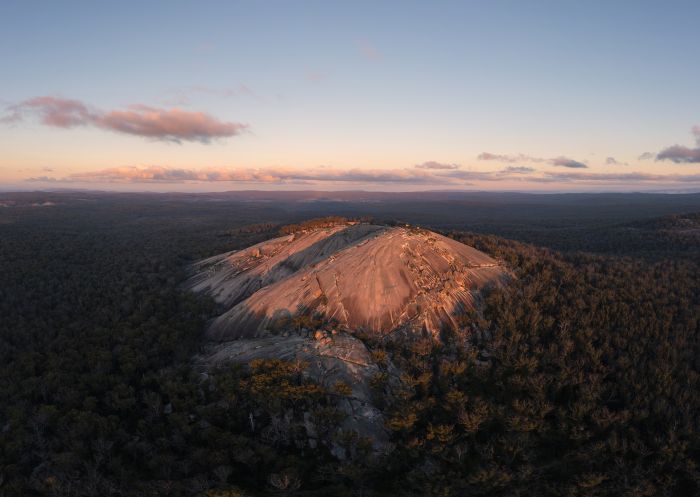
Bald Rock National Park, Tenterfield
Covering 46 square kilometres and with nearly three times the capacity of Sydney Harbour, Lake Copeton is one of the largest inland dams in NSW. Set in the Gwydir Valley, around half an hour from Inverell, the lake was full in 2021 for the first time in 10 years, making it a holiday playground. While water levels have since dropped, you can still enjoy fishing, sailing, waterskiing, jetskiing, canoeing and swimming on the water, with bushwalks, camping and picnic spots around the edge. Make sure to walk across the top of the 113-metre-high dam wall.
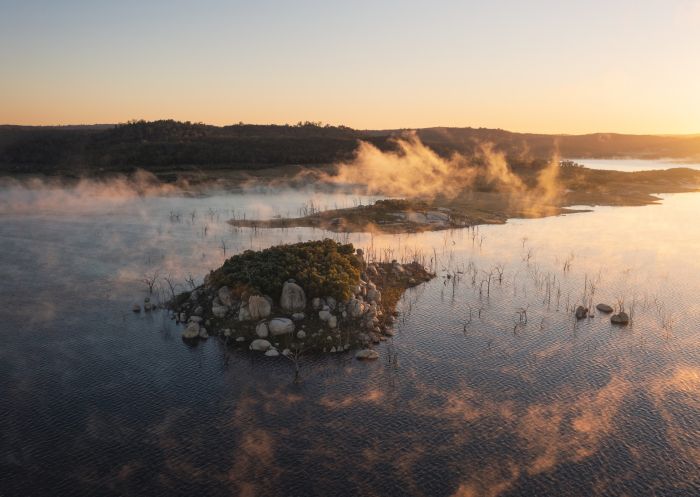
Lake Copeton, Inverell
The New England High Country of northwest NSW is a remarkably rocky place. Just outside of Glen Innes, a large flat field is scattered with a huge collection of granite boulders and outcrops, some over five metres high. Though they are the product of millennia of erosion, they look more like they have been carefully stacked in place – and so they were given the name Stonehenge. When seen from above, the rock formations have been said to resemble a cemetery or even a village in ruins.

Australian Standing Stones, Glen Innes
Stay connected to Visit NSW for all the latest news, stories, upcoming events and travel inspiration.
All the insider news, tips and inspiration you need to plan your next trip, delivered straight to your inbox.
Sign UpVisitNSW.com is the official tourism site for Destination NSW.
© Copyright 2025 Destination NSW. All rights reserved